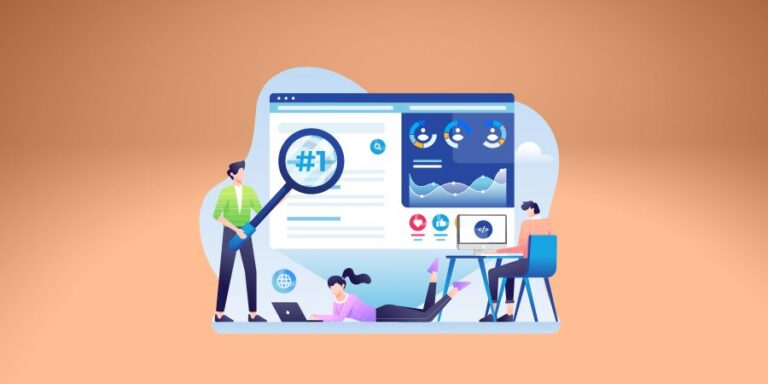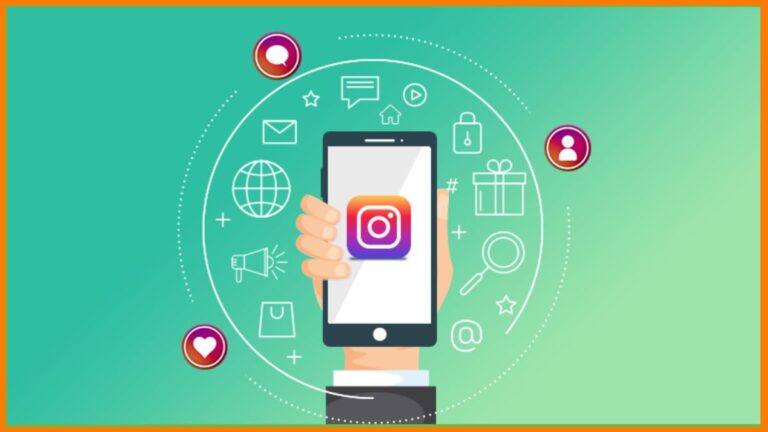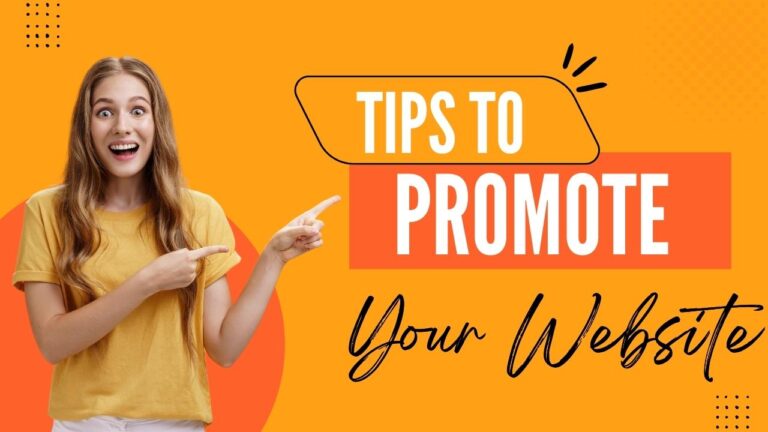What happens when you search for a specialist, a business, or a vendor in your area?
Google shows you the best nearby results.
Would that have been possible without those businesses investing in local marketing?
The answer is No.
What is Local Marketing?
Local marketing is a marketing strategy that helps you target potential customers within your geographical location. It comprises both online and offline marketing.
Most local customers rely on local searches or word of mouth to find a business and visit physically.
How Will it Help You?
- Target new customers.
- Boost online traffic.
- Improve search rankings.
- Help establish your business in your geographical location.
In this article, we mention a few tips for newbies.
So, if your business has a brick-and-mortar location (Restaurant, Retail Store, Professional Service), multiple service areas, or caters to the local audience, read on.
11 Local Marketing Tips for Newbies
- Target Local SEO
Local SEO is critical if you want to rank in local searches. Optimize your website with keywords and content relevant to your geographical location.
Some useful data-
- 46% of google searches are regarding the information on local businesses.
- Around 89% of consumers use the internet to search for local businesses.
The more your website is optimized for local search, the more likely it will attract local customers to your business.
- Include content that covers local events and news.
- Target locally relevant keywords in your meta content and URLs.
- Write unique content for each location page, including information like NAP, available hours, nearby communities, relevant keywords, location in the title, etc.
- Create relevant backlinks from reputable websites.
- Create separate pages for each product/service you offer.
The best tools are Google Keyword Planner, Google Trends, Google Analytics, Google Search Console, etc.
- Invest in Local Listings and Web Directories
Many industry-specific third-party websites, review sites, and directories act as a bridge between businesses and consumers.
Registering on these will help boost visibility, boost SERPs, and generate more traffic (online and foot).
- Ensure your NAP (Name, Address, Phone number) information is consistent across all platforms.
- Optimize your GMB (Google My Business) listing. It will ensure your business name pops up when users search for name/industry/products.
- You can create listings on platforms like Yelp, Foursquare, BOTW, Angie’s List (Angi), HotFrog, Better Business Bureau, Nextdoor, eLocal, etc.
- Search for your relevant directory with terms like Business Directory (city). You can request the website to add your business category if not there.
- Encourage and monitor reviews on all the listings.
Optimize your listings to get featured in the local pack to boost visibility and improve traffic.
Take a look at this listing of a real estate agency from Dallas in Angie.
- Make Sure Your Website is Mobile and Voice Search Friendly
According to Google, around 27% of people rely on mobile and voice searches while browsing.
Other data reflects that 78% of mobile searches (locally) lead to an in-store purchase.
- Make sure that your website is mobile and voice search-friendly. You can create one separately for mobile devices.
- Incorporate responsive design to help your website adapt to any device users use, enhancing CX.
- Integrate PPC ads to accommodate mobile devices, i.e., your PPC pages should be adaptable for mobile for users to click while browsing.
- Ensure light images and CSS and eliminate pop-ups.
- Reduce loading time to less than 3 seconds.
- Conduct periodic tests.
Some of the best tools are Google’s mobile-friendly test, PageSpeed Insights, Bootstrap, CruX (Chrome User Experience Report), etc.
See how we optimized our website for a variety of devices.
- Utilize Social Media
Social media is one of the fastest and most effective ways to get brand visibility and attract users. Register on the right channels that suits your industry the most.
For example, take a look at our social media twitter channel.
A few examples are LinkedIn (B2B networking), Instagram (image sharing), Tumblr (community blogging), etc.
- Share your customer reviews and testimonials on social media platforms for brand awareness and recognition.
- Automate social media platforms to be prompt to your customers.
- You can use features like geofencing marketing, creating events, and hyperlocal ads to drive traffic and generate leads.
- Some best platforms are LinkedIn, Reddit, Facebook, Twitter, meetup, etc.
- Add local hashtags and location tags to your posts.
Carly Bryanna from Haitna recommends you to get in touch with local influencers in your industry & offer them free products or services for them to endorse your products.
Also Read – 10 Best SEO Content Writing Tools
- Target Mail Campaigns and Email Marketing
Email campaigns are one of the easiest and most effective local marketing methods. It helps you stay connected to your customers, increases engagement, and eventually boosts revenue.
- Create personalized email campaigns for your customers for better engagement and higher open rates. 75% of the marketers believed it got higher CTR, while 82% reported higher open rates.
- Create a local email list through footfalls in your business and send targeted email campaigns. It will help you remind customers of your business from time to time.
- You get to offer personalized service to your customers thanks to interaction through targeted email campaigns, increasing customer experience and engagement (customers are likely to share personal information when offered customized discounts and offers).
- You can send customized coupons, discounts, events, regular newsletters, etc., as part of your marketing strategy.
- Reach your Local Customers with Paid Ads
Paid Ads are a great way to generate a good amount of traffic and target a specified geographical area.
If done right, paid Ads are the quickest ways to help your potential customers discover your business.
- Add intent keywords and location information in your ads, for example, lawyer/city. So, your name pops up if someone searches for a lawyer near me.
- Go for Google Ads (Local Service Ads, Shopping Ads) and PPC campaigns for better reach.
- You can try creating your ad campaigns around customer reviews. For example, we hired them for plumbing, and they were perfect.
- Optimize your ads for mobile with terms like “Near me” search (Near me mobile search has gone up by 500% in the last two years) and Google Local Inventory Ads, etc.
- You can also try call-only ads. Also, you can link your GMB page or add information like your phone number in AdWords for extra authority.
You can also try platforms like Newspapers, Radio, local sponsorships, etc., for better reach.
- Make Use of Testimonials and Customer Reviews
According to a consumer survey by Brightlocal, 92% of users now read online reviews, highlighting the importance of what your customers have to say about you.
Take a look at our testimonial section.
Positive reviews will help you build consumer trust, improve CTR and boost your SERP ranking.
- You can send a thank-you mail post-sale of your product or service, encouraging testimonials and feedback.
- Make sure that you reply to all reviews, negative or positive. It shows your customers and potential customers that you care about them, improving customer engagement.
- Encourage reviews on platforms specific to your industry. For example, if you are a restaurant, positive reviews on TripAdvisor will help you attract a larger customer base.
- You can use remarketing to avail reviews. Create a thank you page in your google analytics, which your customer lands on, posts an event, or after completing a form.
Tag those users who visit that URL and create a display ad asking them to leave reviews on google or any platform.
- Target Local Influencers
You must have seen brands reaching out to local influencers on social media seeking to promote their products and services.
For example, a clothing store sending a freebie to a local influencer or a restaurant invites food bloggers for wider outreach.
Targeting micro-influencers will help boost your brand reach and attract a big pool of customers. All the more useful if you are a newbie looking to establish your business.
- Set clear, specific, and time-bound goals for your influencer marketing strategy.
- Have a clear idea of your budget and target audience and influencers with a high engagement ratio on social media channels.
- You can run a simple google search of the best local influencers near me/city to find the best in your industry.
- Run a proper influencer audit to ensure that you partner with a credible business.
- Partner Up with Other Businesses and Work on Cross Promotion
You can partner up with other businesses to reach a wider audience.
For example, if you were an apparel business, you could tie up with jewelry or an accessory store, promoting together with combined offers and coupons.
- Choose a business that compliments your business without direct or indirect competition.
For example, if you were a restaurant, you could tie up with a spa service for caring for your body or get in a brewer offering a tasting event.
- You can run combined social media giveaways and contests to boost engagement.
- Cross-promote on social media, tagging the other business for combined viewership and increased traffic. It can also help you advertise at events such as product launches.
- Invest in combined referral programs and partnership events.
- You can try the app Madneto to find businesses and manage cross-promotional campaigns on this first-ever cross-promotion platform.
- Create Loyalty or Referral Programs
Creating new leads is an all-time work. So, it’s natural that businesses seek to retain their customers. Loyalty and referral programs are a great way to do that.
You can reward existing customers, get new ones, reduce the churn rate, and increase profits.
- Take customer feedback or a survey to understand your current consumer behavior.
For example, what do you sell the most? How long have they been your customers? Are they happy with your services?
- Set measurable goals with a budget and what you wish to seek out from your programs.
- You can create loyalty programs offering redeemable points in ways like customers can buy products from a catalog, get a discount on the bill, buy tickets to an event or show, etc.
- You can use double-sided incentives (giving incentives to both the referred and existing consumer) as part of your referral strategy to get the highest engagement.
According to research, 92% of customers globally trust earned media (recommendations from family/friends) over all other forms of advertising.
So, invest in your customers to drive growth.
- Sponsor Events Locally and Engage with the Community
Sponsoring events or engaging with the community has twin benefits.
You get to build a real-world bridge with the community around you and increase your brand visibility to the local audience.
- You can sponsor events like a school event, local marathon, sport, fundraiser, etc. It will help you get visibility by showcasing your brand name on marketing material.
For example, see how ASICS is conducting a marathon in Los Angeles.
- Host events to help customers build a positive mindset toward your products. It will help create a domino effect of brand awareness and positive reputation building.
For example, if you were a B2B company, you could hold a public demo of your products.
- You can make use of experiential marketing when hosting events.
For example, if you were a toy store, you could create a section to let guests have hands-on fun with the products.
- Organize community events and promotional events.
Key Takeaways
- Make a detailed GMB profile with consistent and accurate information.
- Optimize your website for mobile and local SEO.
- Localize social media and paid ads.
- Support local social issues relevant to your target audience.
- Invest in personalized marketing. Some examples – share a coke campaign by Coca-Cola, Mug Map by Starbucks, etc.
- Connect with professional groups relevant to your business to share expertise and networking.
- Connect with local media. For example, ads in local papers or radio stations.
- Make use of local roundups. Try to get featured in as many as possible to boost visibility and brand credibility; for instance, there could be an online article featuring the ten best sushi restaurants in Manhattan or the five best plumbing services in the city.







